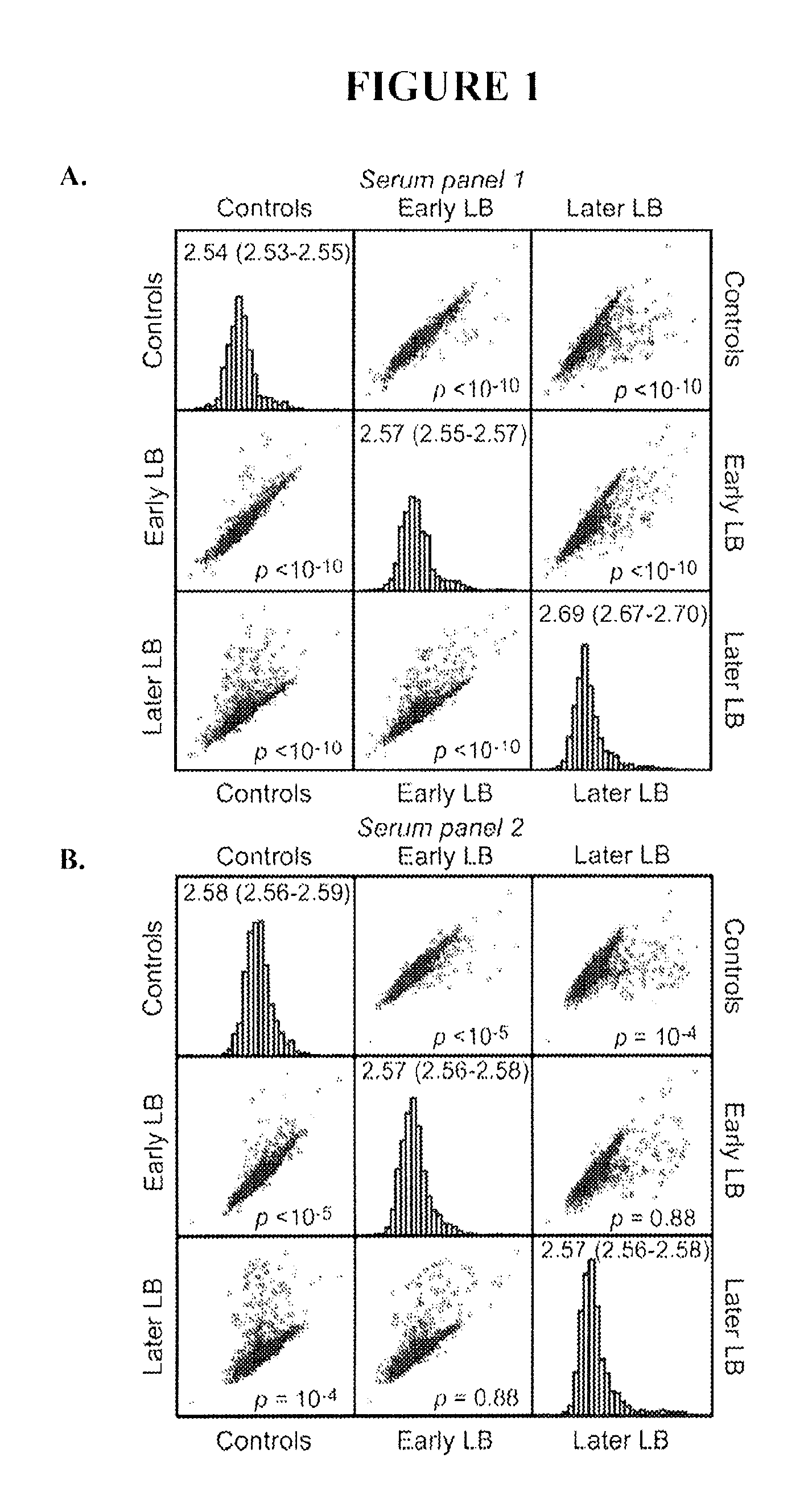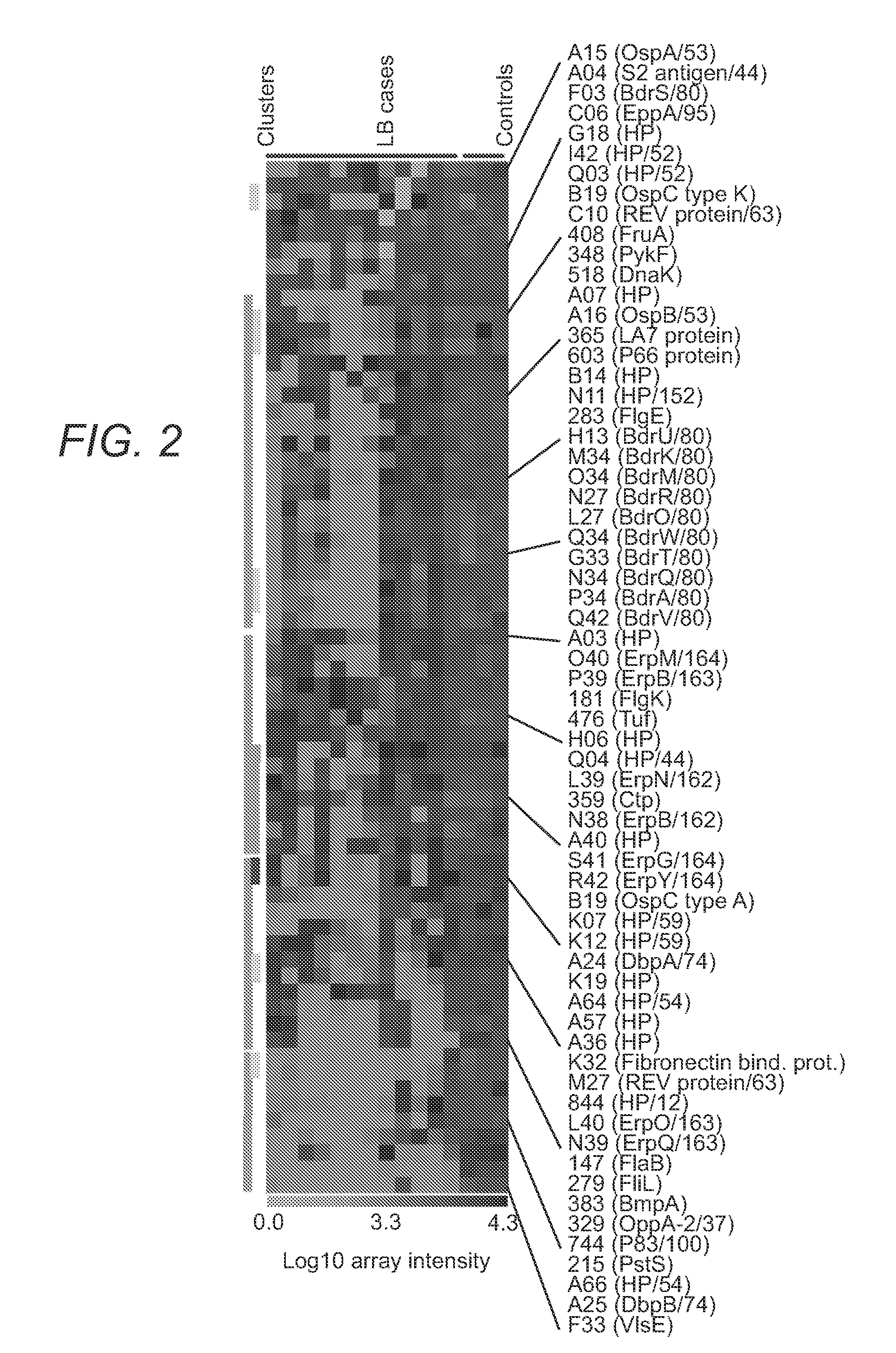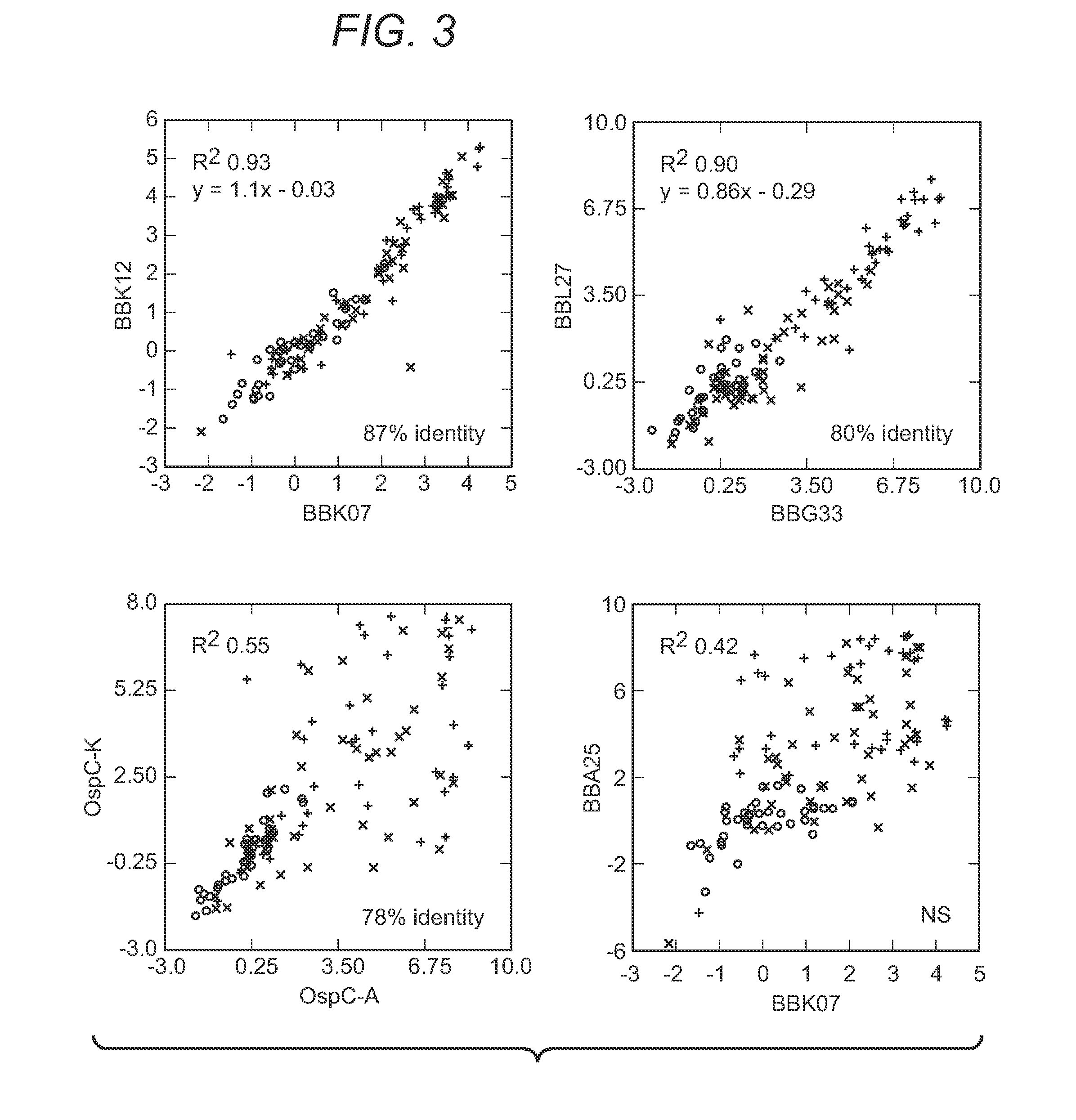Borrelia diagnostics and screening methods
a technology of borrelia and diagnostics, applied in the field of borrelia detection methods, can solve the problems of difficult diagnosis of early lyme disease solely based on clinical and epidemiologic features, difficult procedure, and high cost of two assays
- Summary
- Abstract
- Description
- Claims
- Application Information
AI Technical Summary
Benefits of technology
Problems solved by technology
Method used
Image
Examples
example 1
Screening for Lyme Disease Related Antigens
[0090]This example describes genome-wide screening using arrays such that all or most open reading frames will be represented and screened without bias toward those expressed in greatest amounts in culture medium.
Materials and Methods
[0091]Bacterial strain, genome sequences, and primer design. Strain B31 of B. burgdorferi had undergone three passages since its isolation (6, 19). This organism was cultivated in BSK II broth medium (6). A high-passage isolate of strain B31 had been cloned by limiting dilution and had been serially passed in culture medium at least 50 times. Whole-genome DNA was extracted from the low-passage isolate as described previously (62). Primers were based on the sequences and annotations of the chromosome and 21 plasmids of strain B31 (http: / / www., followed by “blackwellpublishing.com / products / journals / suppmat / mole / casjens.htm”) (21, 39). Forward and reverse primers were 20 nucleotides long and were complementary to ...
PUM
| Property | Measurement | Unit |
|---|---|---|
| concentrations | aaaaa | aaaaa |
| concentrations | aaaaa | aaaaa |
| concentrations | aaaaa | aaaaa |
Abstract
Description
Claims
Application Information
 Login to View More
Login to View More - R&D
- Intellectual Property
- Life Sciences
- Materials
- Tech Scout
- Unparalleled Data Quality
- Higher Quality Content
- 60% Fewer Hallucinations
Browse by: Latest US Patents, China's latest patents, Technical Efficacy Thesaurus, Application Domain, Technology Topic, Popular Technical Reports.
© 2025 PatSnap. All rights reserved.Legal|Privacy policy|Modern Slavery Act Transparency Statement|Sitemap|About US| Contact US: help@patsnap.com



